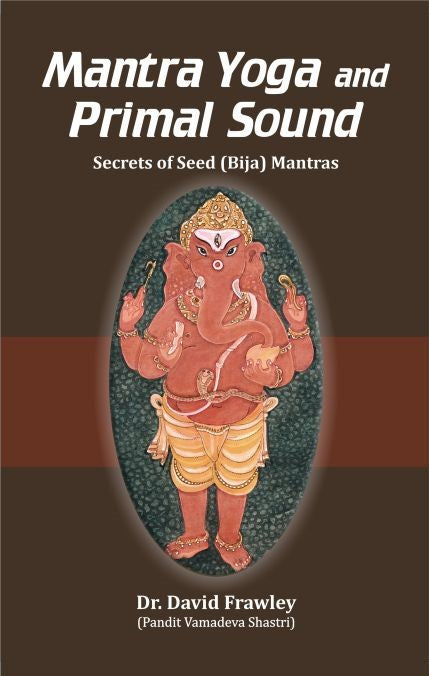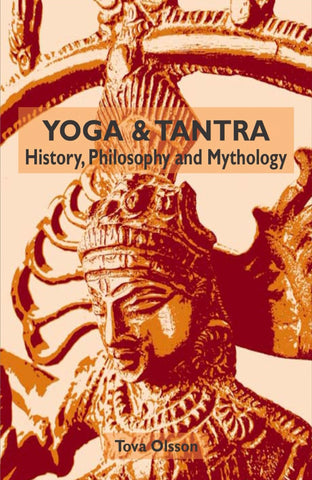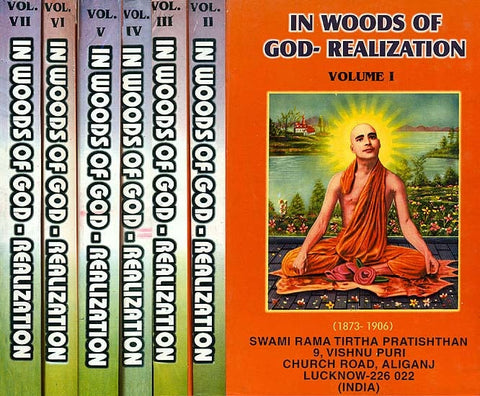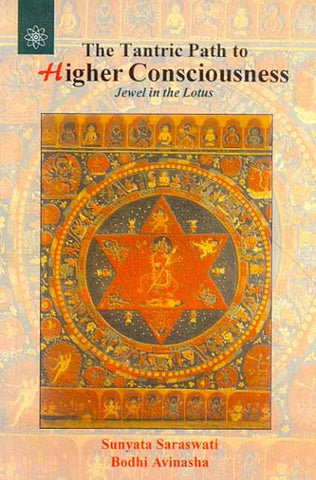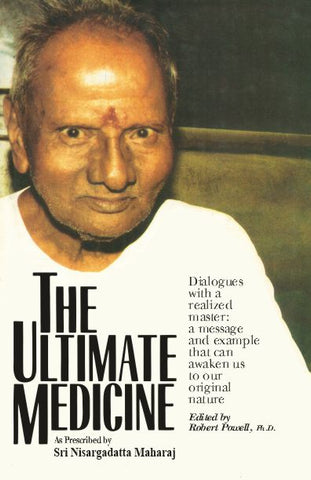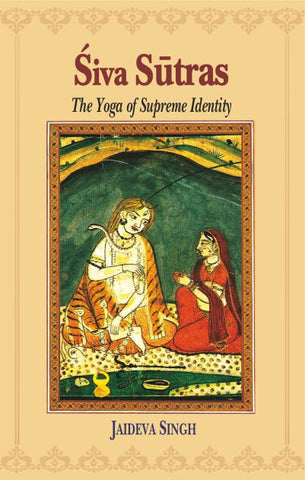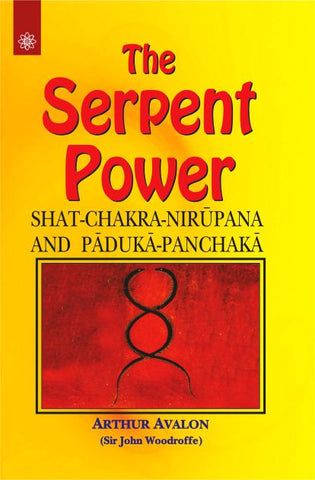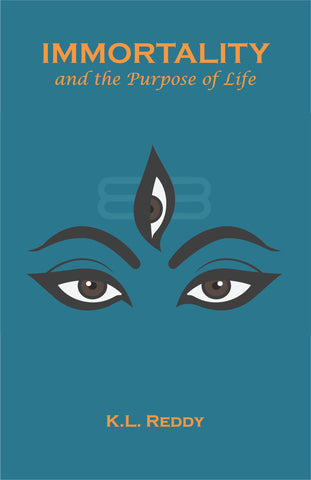Your cart is empty now.
This book is not simply a collection of Mantras or an expression of their moral significance; it is an interpretation of the philosophy and the reality of the mantric approach to intelligence and knowledge held within the sound code or vibratory pattern behind the universe itself.
The author has taken care explaining the Bija Mantras, starting with the letters of the Sanskrit alphabet, and leading up to the mantra Purusha or body of sound which is considered an important practice in mantra yoga. The application of the mantra therapy in the Vedic sciences of Ayurvedic medicines, Vedic astrology and Vastu sciences, too, form an important part of the book.
Modern science and ancient wisdom traditions agree that the universe is a symphony of vibrational frequencies. In this beautiful, comprehensive, and unique work, Vamadeva Shastri elaborates on the essential truths about cosmic sound, and how we can employ important mantras for healing, transformation and inner awakening. - Deepak Chopra, M.D. and David Simon, M.D.,
David Frawley's new book Mantra Yoga and Primal Sound celebrates his great love and vast knowledge of the subject. It is an energizing, vibrant description of this most ancient and powerful spiritual practice at the very heart of the yoga tradition. - Vyaas Houston, the American Sanskrit Institute
David Frawley (Vamadeva Shastri) is one of the few Westerners recognized in India as a Vedacharya or teacher of ancient Vedic wisdom. He is the author of numerous books and articles on Vedic Topics including Ayurveda, Vedic Astrology, Vedanta, Hinduism, Yoga and Tantra, as well as translations and interpretations from the Vedas. Dr Frawley has been given many awards for his work in India including the Veda Vyasa Award by the International Institute of India Studies. He is a Jyotish Kovid through the Indian Council of Astrological Sciences, and is also the President of the American Council of Vedic Astrology, the American offshoot of the Indian council; He has a Doctorês degree in Chinese Medicine and has also been certified as an expert through the University of Poona for his knowledge of Yoga and Ayurveda. He is presently the Director of the American Institute of Vedic Studies.
Mantra is the key to Yoga in the deeper sense and to awakening a higher intelligence within us. Yet mantra remains a subject filled with mystery, illusion and misapplication that would benefit from a clear, systematic and in-depth explication, such as other aspects of Yoga have already received. I have aimed at such a presentation here, not just an introductory book on the subject.
Over the past few decades, I have written several books on different aspects of Yogic knowledge, Ayurvedic healing and Vedic astrology, in which I have alluded to various mantras and their application. At the same time, I was conducting research for a book devoted entirely to the subject of mantra, which has now come to fruition. I have tried to distil what is most essential and easiest to apply from that greater study and placed it in the present volume.
The book focuses on bija or 'seed mantras' - single-syllable mantras that reflect the primal sounds of the universe. The Mantra Purusha, the person of sound or 'sound body' is the main subject of these correlations. This examination emphasizes the letters of the Sanskrit alphabet, which are the building blocks of all mantras, as well as the primary Shakti mantras which are the most powerful of bija mantras. Yet the book is not meant simply as a list of mantras. It contains an examination of the profound philosophy behind mantras and the important rules of attitude and application necessary to follow in order to allow mantras to work in the best possible manner.
Mantra has been the most intriguing and fascinating aspect of yogic studies for me and the one I have devoted the greatest amount of time to exploring. Mantra perhaps uniquely represents both the teaching and its practice at the same time. It holds the key to the greater Yoga tradition and its continual adaptation. It links the human mind with the cosmic mind. Yet mantra is also something very accessible that we can begin with at any stage of our inner quest.
My study of mantras and sacred sounds began with the poetic and literary explorations of my youth. I was attracted to French symbolists like Rimbaud, English Romantics like Wordsworth and German symbolists like Rilke. I found additional inspiration through the novels of Herman Hesse and the alchemical studies of the noted psychologist C.G. Jung. There seemed to be a deeper universal language of sound and image hidden behind such different depictions of symbolic languages.
My study moved further into the mystical sphere, to the East and to the ancient world. This included looking into the symbolism of the Chinese I Ching or Book of Changes and the Egyptian Book of the Dead. I found that images like the Sun, Moon, dawn, night, fire, wind and lightning possessed a great evocative power for understanding the mysteries of the psyche and the universe as a whole. I discovered astrology as a cosmic symbolism that reflected a higher language of light.
However, it was in the yogic traditions of India that I discovered the deepest connections to symbolic language and primal sound, which appeared inherent to the great Sanskrit language, the language of mantra. I became fascinated not just by the philosophy but by the symbolism of Hindu scriptures in the Upanishads and Bhagavad Gita. The great diversity of Hindu deities and their rich symbolic portrayals of multiple arms, gestures, ornaments, weapons and colours reflected in me a deeper understanding of the universal meaning of light, colour, form, symbol and movement.
I was similarly drawn both to Yoga philosophy and to yogic imagery, particularly in the Tantra and its inner alchemy of the Sun and the Moon, fire and water, Shiva and Shakti, the mountain God and the mountain Goddess.
The great modern Yogi, poet and philosopher Sri Aurobindo proved to be the central inspiration in this early endeavour. He composed profound poetic works like the monumental epic Savitri -- the longest epic poem in the English language - which features a symbolic journey through all the worlds and planes of consciousness from the Earth to the Absolute beyond all manifestation) He also wrote on the philosophy of poetry and its deeper connection to the mantra.' Most importantly, his study of ancient Vedic texts opened up the yogic symbolism hidden behind the ancient Vedic mantras. Through his influence, I began to understand them at a deeper level than what the academic mind considered them to be.'
In my meditations, I learned to enter into the Vedic world of primal sound that preceded the rational age of philosophies and breathed with the spirit of the Gods. I spent several years in my twenties reading the Rigveda, the Vedic book of mantra, in the original Sanskrit and repeating its rhythmical hymns, noting how the power of certain alliterations and root meanings granted multiple levels and dimensions of meaning to its teaching. I gradually examined the entire field of Vedic mantras, deities and symbolisms in all ten books or mandalas of the Rigveda and over time translated many of them.
Over time, I expanded my Sanskrit studies to classical Stotras, poetic hymns to Hindu deities composed in special intricate meters and melodies. Most notable were the beautiful Saundarya Lahiri (The Wave of Beauty) and Ananda Lahiri (The Wave of Bliss) by the great Advaitic sage Shankara, which were dedicated to the Goddess as Tripura Sundari, the 'Beauty of the Three Worlds' and unfolded all the secret meanings of Shakti and the chakras. I discovered the power of Stotras as an invocation of the Divine presence, a sacred connection to the entire universe and its indwelling Being.
Besides such symbolic explorations, Vedantic philosophy provided another great source of inspiration, including the philosophy of mantra and cosmic sound that is commonly found in these teachings. I meditated upon the great mantric phrases of non-dualistic Vedanta like 'Everything is Brahman' (the supreme Godhead)5, learning to ride the waves of cosmic sound and meaning beyond the mind and senses. I contemplated the Sanskrit verses of great classics of the Yoga of knowledge like the Yoga Vasishta, which are mantric verses in their own right, combining the highest yogic knowledge with profound poetic utterances. Most importantly, I explored bija mantras (seed syllables) and primal sounds in Tantric Yoga, including Shakti mantras and sounds of the chakras and nadis, whether from the traditions of Kashmiri Shaivism, Bengali Tantra, Advaitic Tantra or the Shakta or Goddess tradition as a whole in which mantra is the prime method, the Goddess herself equated with the Divine Word.'
I learned to use mantras along with the practice of pranayama for bringing greater awareness and energy into both mind and body. Such pranayama-mantra vibrations can lift the mind into samadhi or higher states of oneness, which it would otherwise not have access to. I recall falling into such states of higher consciousness, not even knowing what they were, evoked through prana and mantra in a simple and direct manner. Through the power of mantra, I could witness the mind and its habitual patterns becoming unravelled back to the Void, the pure space of cosmic sound and the higher electrical forces beyond all creaturely limitations.
During my many trips to India, 1 received special mantras from several great gurus and teachers, both known and unknown. Sometimes these mantras were complex, and other times very simple. These included special Vedic mantras, particularly to Indra, Agni and Soma, and Tantric bija mantras, used both in outer ritual and inner meditations. It included mantric verses to Shiva, the Goddess, Krishna, Rama, Ganesha, Hanuman and the whole range of Hindu deities. I was taught how to use these mantras along with the forces of nature like fire and water, as well as with the inner senses, inner sound and light vibrations.
I discovered such great modern Sanskrit teachers and Mantra Yoga experts as Ganapati Muni, the chief disciple of the great sage, Ramana Maharshi. Ganapati's main living disciple K. Natesan passed on the entire corpus of Ganapati's Sanskrit works to me to study, preserve and share, I learned the important role of mantra in Hindu life overall and in the great festivals of India, as well as the mantras that resound at the great temples of the land from Tamil Nadu in the south to the snow-covered Himalayas in the north.
Besides the role of mantra in higher Yoga practices, I explored the place of mantra therapy in Ayurvedic medicine as a tool for psychological and physical healing, particularly how mantras can remove deep-seated negative emotional patterns and karmic blockages from the mind and heart. I learned the use of mantras as potent remedial measures in Vedic astrology to balance out difficult karmic influences transmitted by the planets, particularly malefic Saturn and Rahu that cause many obstacles and limitations in life.
The language of mantra provides a foundation for integrating all the Vedic and yogic disciplines and sciences into a single great teaching, Such key yogic concepts as the five elements, the seven chakras, and the three gunas are part of a mantric tapestry, linking us back to the cosmic mind and our true Self beyond name and form. Mantra is the essence of the great yogic teaching as well as its primary practice. It turns teaching into practice and allows our practice to directly teach us, as the mantra gains its own life and consciousness on the very ground of our being.
I would like to thank Yogi Baba Prem, Nicolai Bachman, Pavan Kanwar and Don Diggs for going over the manuscript and Hinduism Today for providing its wonderful illustrations for this as in several of my previous books. If I succeed in encouraging the reader to a deeper study and practice, my goal of writing will be fulfilled.
In closing, I would like to dedicate the book to K. Natesan, who recently passed away at the age of ninety-six in Tiruvannamalai, India. Natesan was a source of great inspiration for my Sanskrit studies through his gurus Bhagavan Ramana Maharshi and Kavyakantha Ganapati Muni; he was close to both since his childhood. Ganapati Muni's Sanskrit works were particularly helpful as the Muni explains the secrets of Vedic and Tantric mantras with both precision and grace that I have not seen elsewhere. May such great Yogis and Rishis continue to guide us!
Dr. David Frawley, Pandit Vamadeva Shastri, is a modern Renaissance man for Eastern mystical studies.
If one is interested in Vedic Astrology, he has insightful books filled with information and wisdom about this ancient science.
If one is drawn to the ancient science of healing called Ayurveda, again David Frawley has books that will illumine the subject for you and guide you to further reading and studies.
If your interests lie in the area of classical tantric practices - and I don't mean of the sexual variety, but of the true mystical approaches - then you again will do well to consult the books expertly rendered by David Frawley.
But his reach is yet greater. In India, he is recognized as a historian of modern importance. He coauthored Hidden Horizons - Unearthing 10,000 Years of Indian Culture, which has been publicly lauded by many Jagadgurus and spiritual leaders in India.'
So it is with an appreciation for his stellar contributions to Hindu mystical practice, history and thought that I approach this Foreword to yet another great contribution from him: The topic of the Sanskrit Mantra.
Classical descriptions of the mantra are grounded in the idea that this entire creation at both the manifest and subtle levels is a nearly endless combination of the finite vibrations that scholars and mystics alike call the Matrika - The Mother: The Sanskrit alphabet. Whether it is Satya Loka, the realm of pure Truth at the top of the realms of light, or Patala Loka, the lowest of the seven nether realms, the composition of these lokas and the beings of form that inhabit them are composed of various permutations and combinations of the Matrika: The Sanskrit Alphabet. In various mystical texts the Matrika is commonly referred to as "She who binds and She who sets free."
If we are unaware of the existence, power and operation of the Matrika, we are inexorably bound to the wheel of death and rebirth - Samsara. We are in the thrall of She who binds. But if we understand, even if only a little, and practice ancient spiritual formulas called mantras, we enter the realm of "She who sets us free." Mantra is often referred to as "The Divine Name," called "Nama" in Sanskrit. If one goes to any Hindu Temple and approaches one of the priests and says questioningly, "Nama Eva, Nama Eva . . . " there will invariably come the response, "Kevalam, Kevalam." This exchange roughly translates as, "The Name alone, the Name alone . . . sets one free, sets one free." The understanding between the questioner and responder is that the practice of the Sanskrit mantra is the single most efficacious spiritual practice for the current period of Spiritual Winter, called Kali Yuga.
In the last fifty years, Masters such as my own gurus, Sadguru Sant Keshavadas and his wife Sadguru Rama Mata, have both taught extensively and encouraged others like me to spread this knowledge of mantra and make it available to everyone. With his works such as Inner Tantric Yoga and this book, David Frawley lends his authoritative voice to the authentic and reliable resources available to help all of us escape our karmic predicaments.
Dr. Frawley goes into a considerably helpful exposition on the subject of mantra. As a preamble to his discussion, here is a beginning explanation of the subject of mantra from my book, The Ancient Power of Sanskrit Mantra and Ceremony, Volume I. The word mantra has entered colloquial speech much the same way 'guru' has. Advertising slogans become mantras for products or services. Political campaigns develop popular 'mantras' for convincing voters about platform policies or candidates for office. Yet the true genesis and meaning of the term have become swallowed by popular usage along with a commonly agreed-upon definition which does not come close to the original meaning of the word.
For some words, a distinction between what a word truly means and what is generally accepted as the meaning has little importance. But for a word like mantra, the true meaning is important. This is because a mantra is a word or term of power. And the power of every mantra is specific and exact. Therefore, popularly accepted definitions of what mantra is may have no relevance whatsoever to the actual use and effect of the power of a specific Sanskrit mantra.
With this understanding of mantra as an expression of tangible and usable power, we have the first useful item in the application of the science of mantra. Mantras are tools of power and tools for power. They are formidable. They are ancient. They work.
The word mantra is derived from two Sanskrit words. The first is "manas" or "mind," which provides the "man" syllable. The second syllable is drawn from the Sanskrit word "trai" meaning to "protect" or to "free from." Therefore, the word mantra in its most literal sense means "to free from the mind" (the cognitive, creative mind). Mantra is, at its core, a tool used by the mind that eventually frees one from the vagaries of the mind. But the journey from mantra to freedom is a wondrous one. The mind expands, deepens and widens and eventually dips into the essence of cosmic existence. On its journey, the mind comes to understand much about the essence of the vibration of things. And knowledge, as we all know, is power. In the case of the mantra, this power is tangible and wieldable.
Historical Background
The historical derivation of the science and study of mantras corresponds with the intricacies of the Sanskrit language. Sanskrit has been called a variety of names: Deva Lingua (the language of the gods), the "mother of tongues", or simply a divine language. Why should this be?
Linguists commonly ascribe these descriptions to Sanskrit, because it provides a root tongue for so many languages, but the real reason is more esoteric. The Sanskrit alphabet has the same number of petals or spokes as there are on the flowers or wheels of the total of the first six chakras or esoteric energy centres, located along the spine. This is no accident.
The Sanskrit language is a tool for working with the subtle energy potential represented by each of the many chakras in the etheric body. However, the six major chakras contain a map of sounds written on each of the combined petals on those six chakras.
Delivery and Shipping Policy
- INTERNATIONAL SHIPPING
- Rs.1000-1100/kg
- ESTD. Delivery Time: 2-3 weeks (depending on location)
- Bubble Wrapped with Extra Padding
- NATIONAL SHIPPING
- NCR: Rs. 30/half kg
- Standard: Rs. 80/half kg
- Express shipments also available on Request
- ESTD. Delivery Time: Ranging from 1-4 days up to 7 business days (Depending on your choice of Delivery)
- TRACKING
- All orders; national or international, will be provided with a Tracking ID to check the status of their respective orders
- Depending on the Shipping Service, Tracking ID may be used on their respective tracking portals
Frequently Asked Questions (FAQs)
Domestic Shipping: 3-4 Days (after shipping)
International Shipping: 1-2 weeks (based on your location)
You will receive an email once your order has been shipped or you can email us if you didn't receive tracking details (info@mlbd.co.in)
Every book that we sell is the latest edition except all the rare books
Yes, we do provide free shipping, only on domestic orders (within India) above Rs.1500

